Rules
Go is played on a square board with black and white stones. Professional games are played on a 19x19 board; faster games can be played on smaller boards like 9x9 or 13x13.
- The game starts with the empty board; the object of the game is to control more board points than the opponent at the end of the game.
- Black plays first; the players move alternately by placing a stone of their color on an empty point.
- Once played, stones are never moved, but they may be captured if they're completely surrounded by opponent stones.
End of game
A player can pass at any time; the game ends when both players pass. The occupied points as well as the points completely surrounded by a player count as their area; the player with the most area wins the game.
Handicap and Komi
To compensate for differences in strength, the weaker player may start with a handicap of two or more stones. In even games, White gets extra points (komi) to compensate for Black’s advantage of playing first. The komi usually includes a half point to avoid draws.
Capture
Stones that are completely surrounded are captured and removed from the board. For example, White can play at A to capture the black stone.
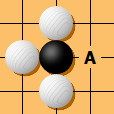
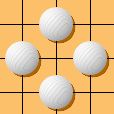
Blocks of stones connected vertically or horizontally fight together and are captured as a unit. For example, White playing at A will capture three stones:
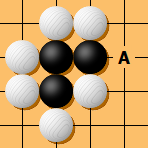
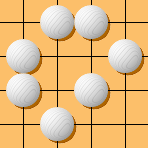
Ko
You're not allowed to repeat previous board positions; the rule of ko prohibits you from playing a move that would cause the position to be repeated.
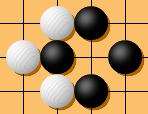
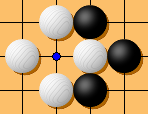
In the above example, you can't capture back immediately. However, you can re-capture after moves are played elsewhere on the board. So you can play a threat elsewhere and then take back after the opponent answers your threat.
Suicide
Moves that end up being completely surrounded are forbidden. Two examples:
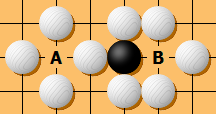
Both A and B are suicide for Black: The black stones would end up completely surrounded. However, Black can play at C, as that would capture two white stones:
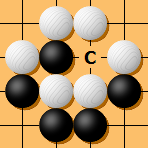
Liberties
A liberty is an empty point next to a block of stones. For example, this white block has three liberties, at A, B, and C:
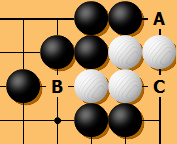
A block is captured when it has no liberties. A block with a single liberty is said to be in atari.
Having just one liberty more than the opponent can be decisive. For example, two blocks in this diagram are locked in a race to capture: White can play A and B to capture the three black stones, while Black needs to play C, D, and E to capture the three white stones. White will win this fight.
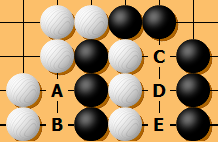
Life and Death
An eye is a single empty point surrounded by one player. Unless a move there captures some stones, the opponent can't play in an eye due to the suicide rule.
A single eye can be completely surrounded and captured:
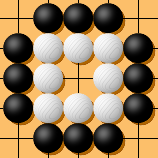

When a group has two eyes, it is safe from capture, even if completely surrounded, as the opponent can't play in either eye. Such a group is alive. For example:
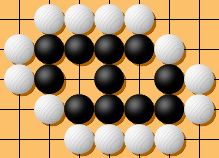
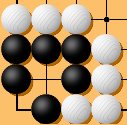
Beware of false eyes where the stones surrounding your eye can be captured: it is important to keep the stones around your eye connected by controlling the diagonals. For example, the following groups have a false eye due to the stones marked with triangles:
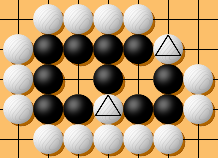

Stones that can not make two eyes and that can be captured no matter what are often left on the board at the end of the game and just counted for the opponent. For example, the two black stones are dead and will be counted for White at the end of the game:

With the AGA rules used by SmartGo, the score remains the same whether White captures these stones or not.
Seki
Blocks can be alive in seki when they coexist in such a way that neither player wants to play. For example:

A move by either player would let the opponent capture, so both blocks stay on the board and are counted as alive at the end of the game.
Scoring
There are two ways to count the score at the end of the game:
- Area Scoring: Count occupied points as well as empty points completely surrounded by a player.
- Territory Scoring: Count empty points completely surrounded by a player, plus captured stones.
The two methods of scoring yield the same result if both players play the same number of stones. SmartGo uses the official rules of the AGA (American Go Association) to adjust for pass moves and handicap to ensure that the two scoring methods lead to the same result.